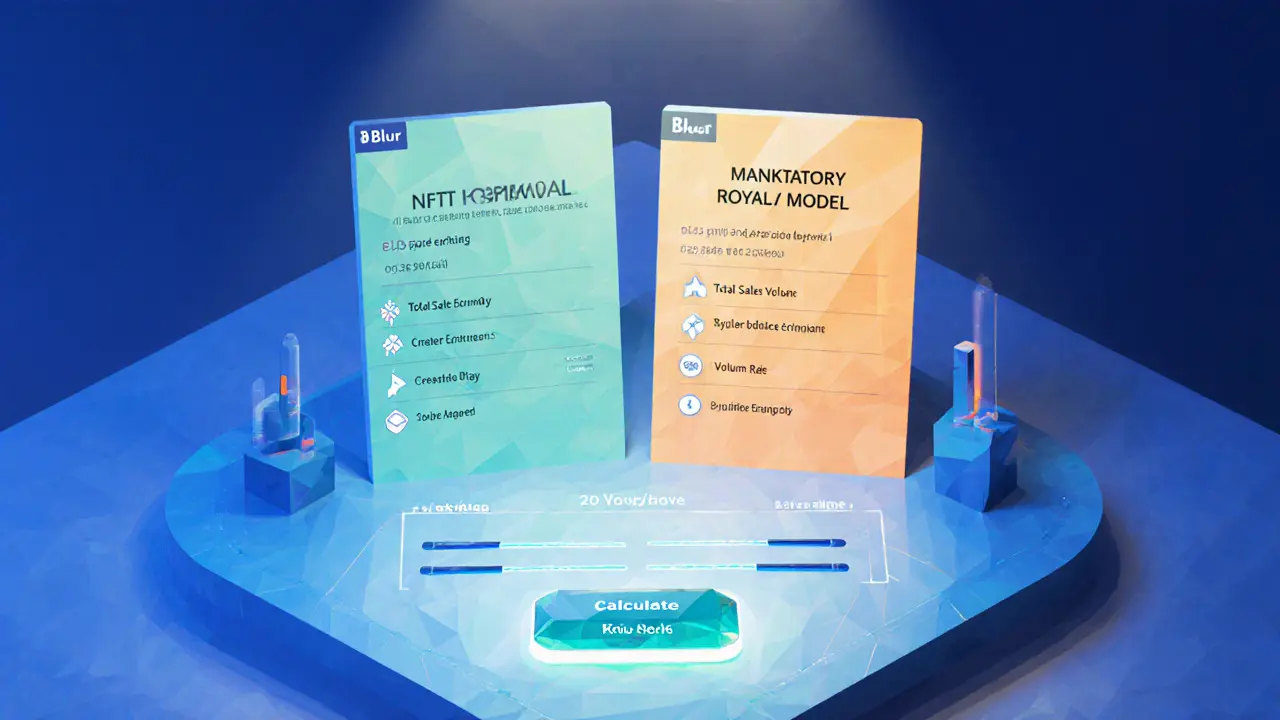ERC-2981: The NFT Royalty Standard Explained
When working with ERC-2981, a standardized interface that lets creators embed royalty details directly into a token’s smart contract. Also known as NFT Royalty Standard, it provides a clear on‑chain method for specifying how much a creator should earn each time the token changes hands. This protocol ERC-2981 sits on top of the broader ecosystem of NFTs, unique digital assets that represent ownership of art, music, or virtual goods on a blockchain and relies on smart contracts, self‑executing code that governs token behavior without a middleman to expose royalty information to any compatible platform.
One of the key benefits of ERC-2981 is its simplicity: a single function call returns the royalty receiver address and the percentage (in basis points) owed for a given sale price. This means that a marketplace can pull the data and automatically deduct the royalty fee before completing a transaction. In practice, marketplaces, platforms like OpenSea, Rarible, and LooksRare that list and trade NFTs adopt the standard to ensure creators get paid without manual intervention. The relationship can be captured as a semantic triple: "ERC-2981 defines royalty data" → "used by" → "marketplaces".
Implementing ERC-2981 also influences token metadata strategies. Because the royalty details are stored on‑chain, creators no longer need to embed payment instructions in off‑chain JSON files. This reduces the risk of broken links or outdated terms, and it aligns with the broader push for interoperable token standards such as EIP‑721 and EIP‑1155. A typical implementation sets a default royalty for the entire collection, while also allowing per‑token overrides for special editions. This flexibility supports a range of business models, from flat‑rate royalties to tiered structures based on secondary‑sale volume.
From a developer’s perspective, the standard is straightforward to integrate. A Solidity contract only needs to inherit the IERC2981 interface and override the royaltyInfo function. The function takes a tokenId and salePrice, then returns the receiver address and royalty amount. Because the calculation is deterministic, the royalty amount equals (salePrice * royaltyBps) / 10,000. This deterministic nature enables auditability: anyone can verify that the correct percentage is being applied, which builds trust for both creators and buyers. Another semantic connection: "smart contracts implement" → "ERC-2981" → "to expose royalty data".
Below you’ll find a curated collection of articles that dive deeper into each of these aspects. Whether you’re a creator looking to protect future earnings, a developer adding royalty support to a new collection, or a trader curious about how marketplaces enforce royalties, the posts cover practical guides, platform reviews, and real‑world case studies that put ERC-2981 into action.

Explore how optional and mandatory NFT royalties differ, their impact on creators and traders, legal nuances, and a practical guide to choosing the best model.
- Read More
